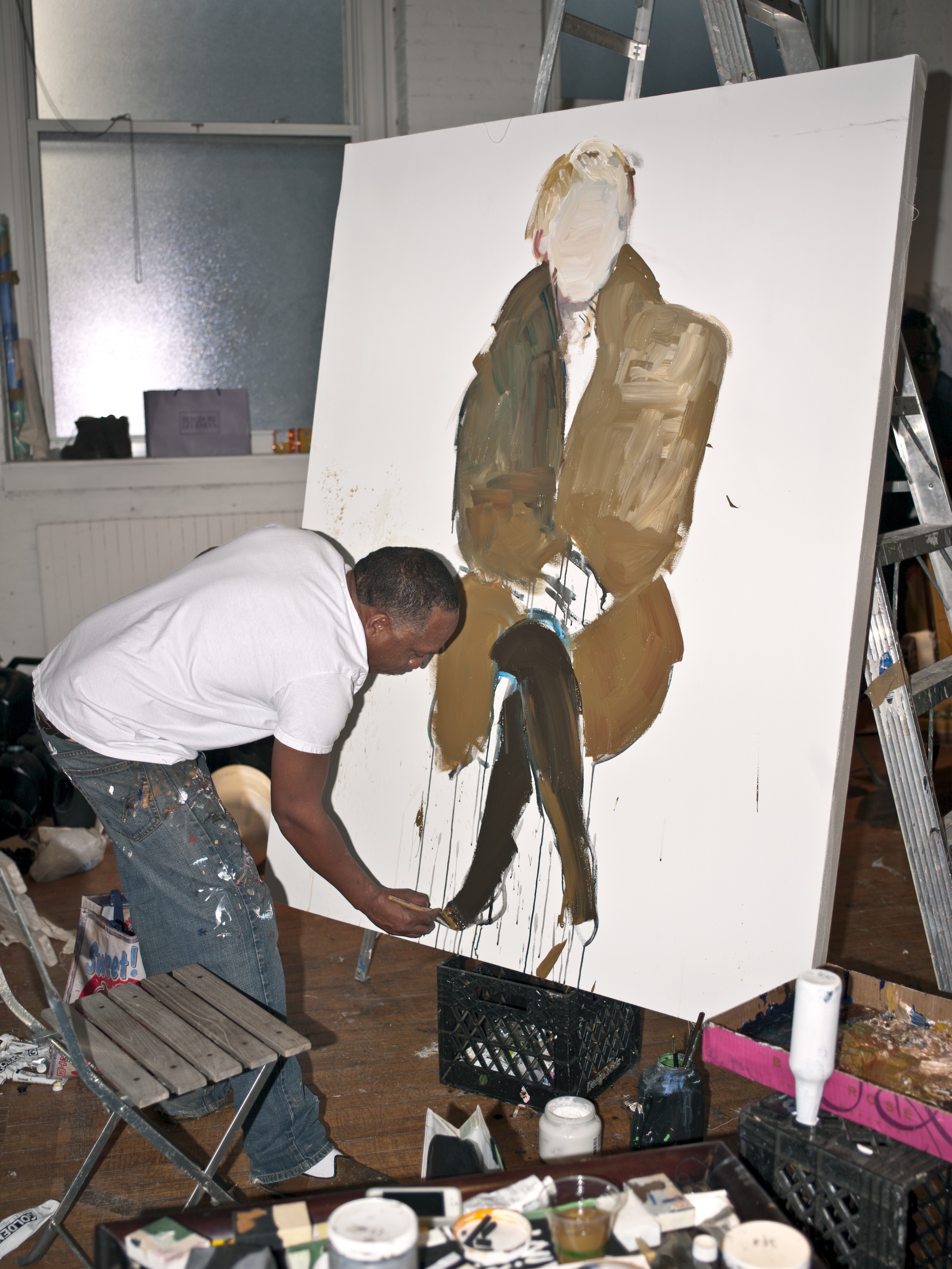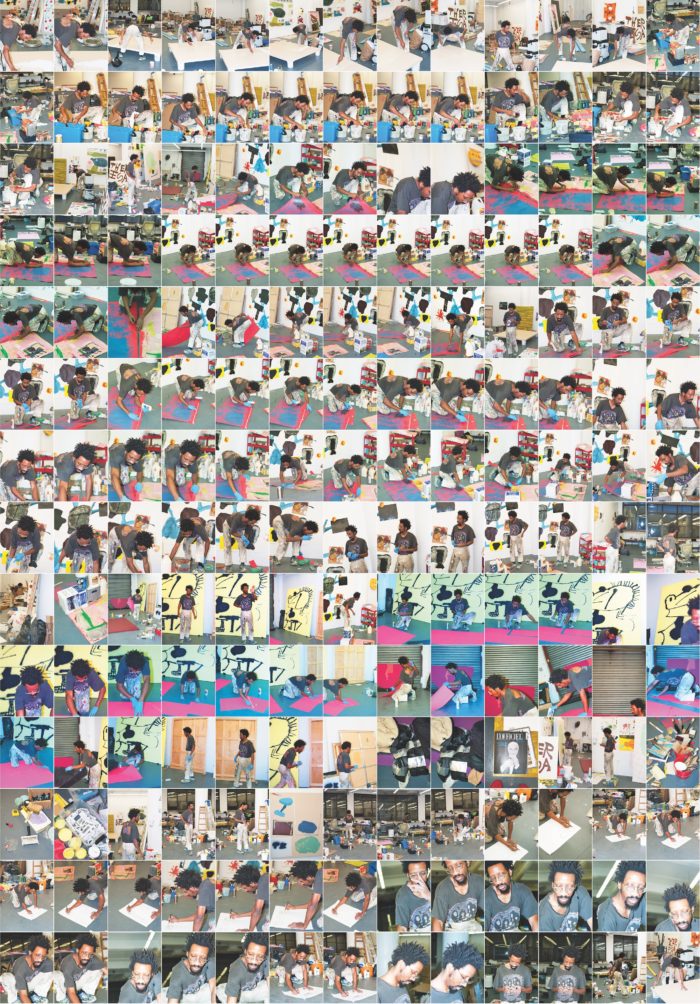
Aubrey Mayer picks me up from the Greenport train station and we drive east to Orient, another town on the tip of New York’s tongue. Mayer grew up on the North Fork and he points out landmarks along our route to the house he now shares with his wife, Toby Bannister and their daughter Frida. The early spring coastline passes like a grey blur.
Orient is the constant for Mayer—a place he returned to three years ago to get some space from a decade of New York grind. “I almost didn’t make it out alive,” he says in all seriousness before cracking a smirk.
When we turn into the driveway, a sailboat emerges from the lawn— it belongs to artist John Tremblay. “The only friends that I’ve had in my adult life have been artists or sailors,” says Mayer, explaining that his life and practice are inextricably intertwined.

Talent Meets Road Mayer met his first subject, Elizabeth Peyton, through a family friend while home one summer from college. He taught the painter to sail and in exchange she agreed to sit for him. Their first shoot was in front of his parents’ garage in the style of Richard Avedon’s In the American West. “I remember the day and still use the footage,” he says.
The friendship with Peyton led to series of new ones including White Columns Director Matthew Higgs, who published the artist’s book, “6-17- 10A,” a project with Christopher Wool documenting the creation of one of his paintings at his home in Marfa, where the artist lives with his wife Charline von Heyl. “When you get to spend time a lot of time with someone, and you sit back and listen, you reach another level of understanding,” Mayer says. “My time with Christopher and Charline changed me.”
After coming home from Texas, Mayer began printing contact sheets rather than single portraits—a development he connects to Wool’s rigorous painting method. “If you watch someone paint like that, you learn things they don’t teach you in school,” Mayer says, pulling down a book with some of these early contact sheets. Wool is depicted, mask on, in motion.

Life as Form Thea Westreich, a champion and sometimes subject, describes Mayer’s practice as participatory. “Aubrey is taking the artist portrait and turning it into a formal act,” she says, “It is like he is climbing inside of these people and seeing them as part of a world he wants to occupy, does occupy. The image comes second to process.” Westrich also noted that what separates Mayer’s work from becoming documentarian is the way in which the artist is able to connect with his subject beyond the relationship of photographer and subject.
Mayer’s friendship with Los Angeles-based painter Jonas Wood speaks to the way his sittings often go beyond the scope of the lens. “I asked if I was supposed to do anything in the photos and Aubrey said ‘No, just work and I’ll take pictures of you,’” Wood says of their first session. “I pretty much just worked the whole time, listened to music, smoked weed, painted, drew. I didn’t really think about getting photographed. I think that’s why the pictures come off really organic.”
The admiration goes both ways. Mayer credits Wood for helping him link him into Los Angeles, where he has going for yearly pilgrimages. The first time he visited, Mayer bound every photo from pilot trip into a one- of -a-kind chronology that he printed on vegetable parchment paper and covered in felt. He called it “LA Magical Misery Tour 2012” after Martin Kippenberger’s “Magical Misery Tour.” This is one way Mayer presents his portraits.

Bound Together The books are a collaboration between the artist and Mayer’s wife, who is a sought-after book binder. Bannister, who cuts and binds books on their kitchen counter, is self-taught and used to work as the head producer at Griffin Editions, the company responsible for Cindy Sherman and Roe Ethridge’s prints. “I see myself as the technician, we are a good match,” she says. “Aubrey has a lot of ideas about how he wants to create something, and I am very good with materials so I am able to construct what he wants. Everything is handmade and that quality really enhances the work.”
The volumes Bannister creates are not your run of the mill monographs. They are tactile and richly detailed. Bannister’s neat stitches provide a contrast to raw edged pages and sometimes heavy felt covers. Sculptural in character, the books hint at the way the artist portrait functions not on only as an image in Mayer’s work, but as a lens for looking at the machinations and values of contemporary art.

Mayer’s living room acts as an extended studio. When I visit, contact sheets of Wool, Grotjahn and Torey Thornton are hanging. This is the other way Mayer presents his work. His sequential images connect the dots between art and labor, art and individual.
This summer, visitors to Joel Mesler’s new East Hampton gallery, Rental, will have a chance to see Mayer’s work in person where it will be included in a group show, “Oliver Twist: Chapter 2.” When I visited his studio, the artist was preparing new contact sheets of Raymond Pettibon with Aida Ruilova and Jamian Juliano Villani. I asked him who he was going to shoot next. He told me: “It’s a secret. To do what I do, I need a backstage pass that takes trust."



